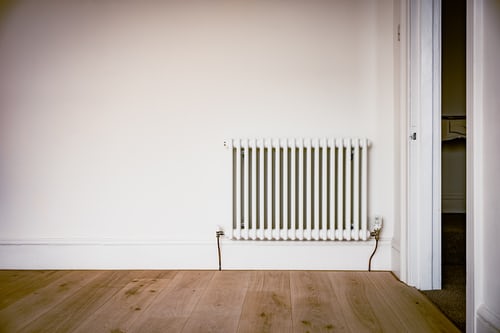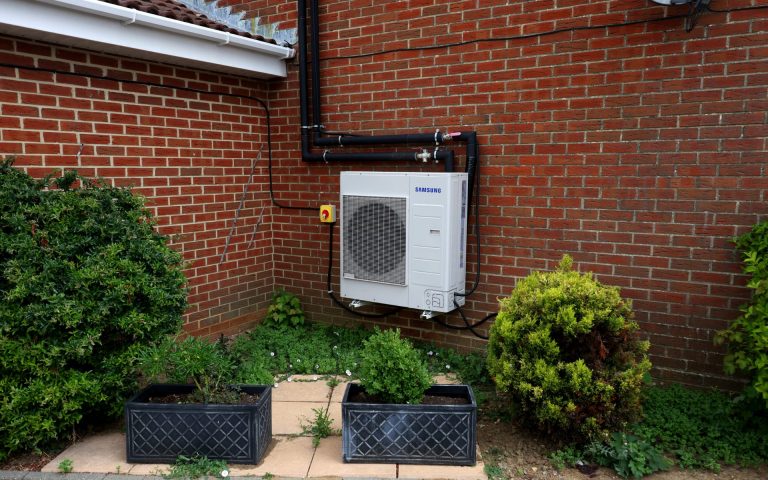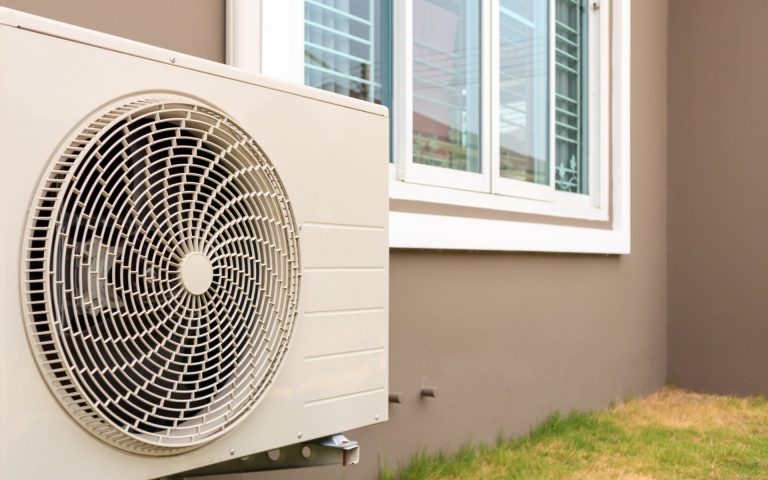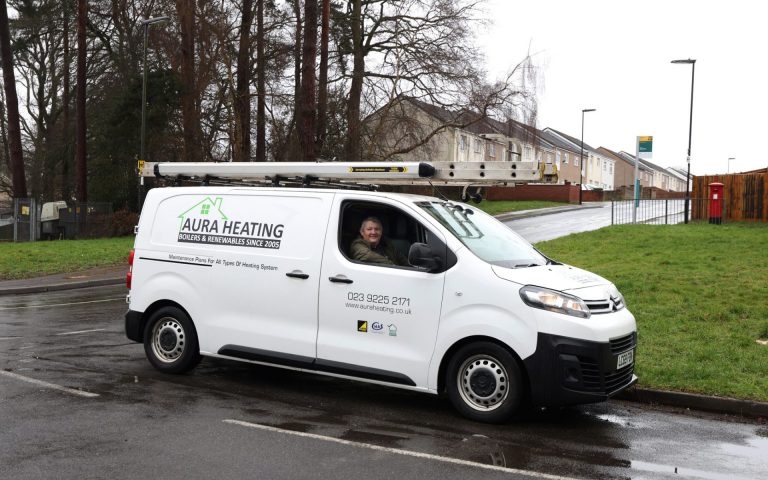This week we’re going to look at radiator valves and when you might need to change them.
What is a radiator valve?
First things first – Let’s take a look at the valves we get on a radiator. There are three valves on a radiator – A lockshield valve (at the bottom of the radiator on the left hand side), a bleed valve (the valve on the top right or left hand side) and the control valve (bottom right hand side).
The control valve tends to be the one that may need replacing and can be either a manual or thermostatic valve.
What are the different radiator valves?
Let’s have a look at each one in turn and see what they do.

Manual radiator valves
The majority of radiators have a manual radiator valve. They allow you to control how much water can flow into your radiator by simply turning the valve, usually with options from 0 to 6 with 6 being the hottest.
Thermostatic radiator valves (TRVs)
A more advanced version of the manual valve, the TRV lets you set a certain room temperature via a small LED display on each radiator. This gives you a bit more control over the temperature of individual rooms in your home.
Lockshield valve
This valve is responsible for keeping the level of hot water in the radiators balanced around your home. This means it can stop the hot water flow to some radiators and direct it towards others if needed.
Bleed valve
You might have read our recent blog on ‘how to bleed a radiator.’ Turning this valve allows any trapped air within the heating system to escape. If you have a cold spot on your radiator or find that it isn’t heating up properly, it may be because there is a blockage of too much air in the radiators. This can be easily released to fix the problem.
When do I need to change a radiator valve?
You don’t usually need to replace a radiator valve unless it’s broken. A broken radiator valve can make it hard for you to control the temperature of the radiator as well as potentially leaking water.
To avoid damage and keep your home heated properly, it’s a good idea to get a faulty or broken radiator valve fixed as quickly as possible.
You may also find yourself wanting to upgrade your manual radiator valves with TRV’s to give you more control over the temperature of your radiators. Not only that, but by replacing your manual valves with thermostatic valves, you could even help your energy bills to decrease.
If you’re into design, then you might find some radiator valves that match your colour scheme and are more in-keeping with the room. There’s a lot of choice out there! So if you are soon to be redecorating (or redecorated during lockdown!) it’s well worth seeing if a new radiator valve would finish the room off nicely.
Can I change a radiator valve myself?
We’re the first to share with you the jobs that are relatively easy for you to carry out at home – Like bleeding radiators and clearing air-locks. Changing a radiator valve is possible to do yourself with the right tools and know-how, but we are actually going to recommend you get a professional heating engineer to come and carry out this one.
It can be a long and tricky job which is better suited to a trained professional who knows their way around a heating system. There are quite a few steps involved in changing a radiator valve and many things to consider.
Will the heating system need to be drained to replace a radiator valve?
One reason why this one is best left to a professional heating engineer is because changing a radiator valve usually requires the heating system to be drained.
However, in some cases a trained heating engineer may be able to replace certain radiator valves without fully draining the heating system.
How do I get the right size radiator valve?
To ensure you’re getting the correct size radiator valve, you need to know the diameter of the connection and pipework (not the height of the valve).
The most common are 15mm pipes, so you’ll likely find that most radiator valves are designed to be fitted to them. Before buying any new radiator valves always check the size of the pipes in your home – They could be anywhere between 8mm and 28mm.
If you do get the wrong size, or find the perfect design but they don’t come in the size you need, you can try to get an adapter to make it fit.
How to save money with the right radiator valves
As we mentioned above, if you’re replacing your radiator valves then it’s a great opportunity to upgrade from manual to thermostatic.
Gaining a full understanding of how to use these properly could help you to reduce your heating bills and use less energy.
The difference between manual and thermostatic radiator valves isn’t just ease of use and control – A TRV can actually detect the temperature in a room, which manual radiator valves cannot do.
Remember that the temperature you see on the LCD display on a TRV is showing you the temperature of the room – Not the radiator. This gives you much more control over the actual temperature in your home (and in individual rooms).
Because of this, you will very rarely need to turn the radiator valves to their maximum – A more common occurrence with manual valves.
By turning the valve up to the highest setting, you could inadvertently be keeping the radiator turned on until the room reaches 30 degrees – Not a temperature most of us want or need in our homes! If you are frequently doing this, you’re going to see it reflected in the price of your heating bills.
The great thing about installing thermostatic radiator valves to each of your radiators all around your home is that it enables you to turn the heating off in some rooms where it’s not needed. This means you won’t be wasting energy heating up rooms that don’t need to be heated, and thus likely save money on your energy bills.
Need a radiator valve replacement?
Call the experts. It’s a safe, stress-free way to get your radiator valves replaced. All of our heating engineers here at Aura Heating are fully trained, Gas Safe registered and carry out jobs like this on a day to day basis.
Let us do the hard work, so you can control the temperature of your home and save money on your heating bills. Call our friendly team today!






